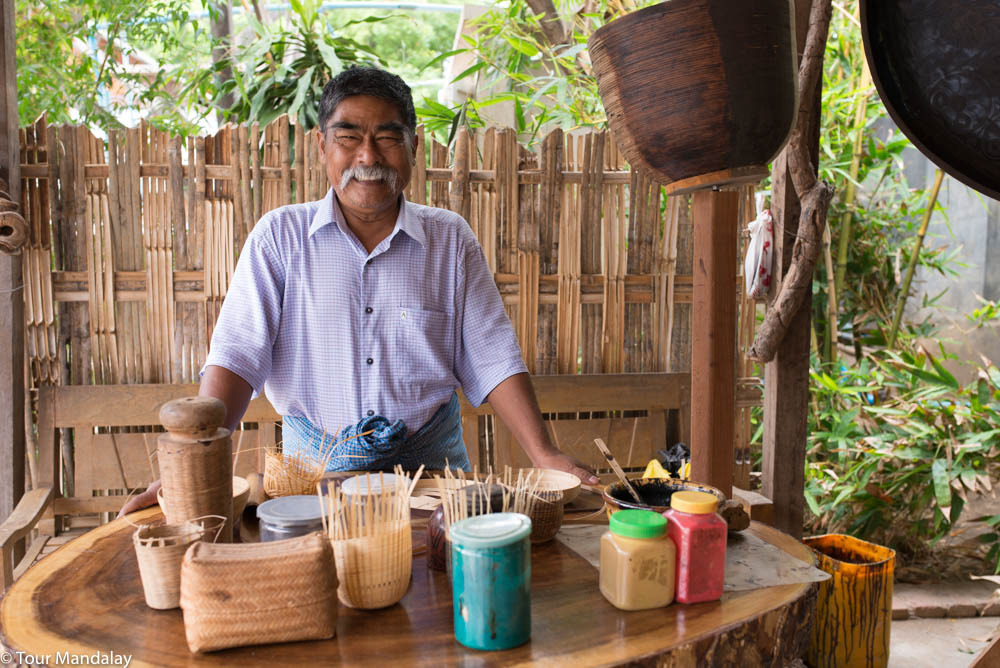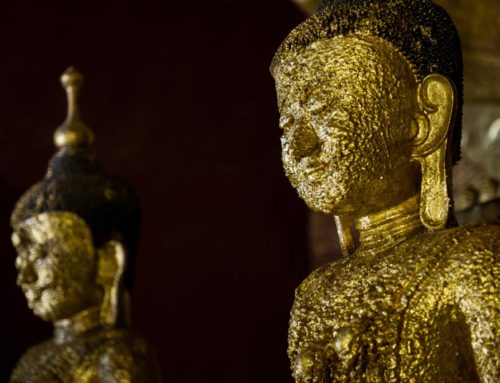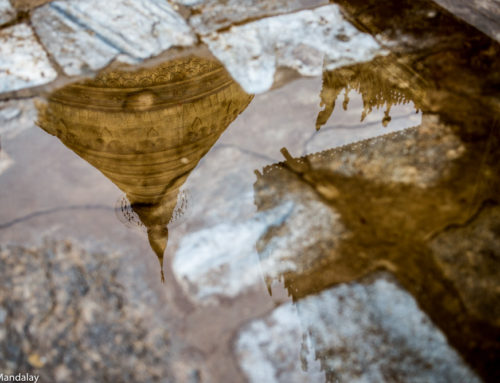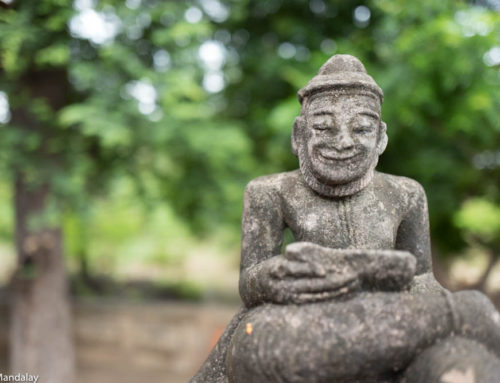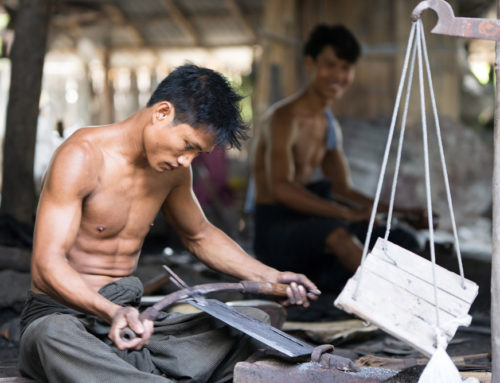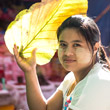BAGAN ESSENTIALS
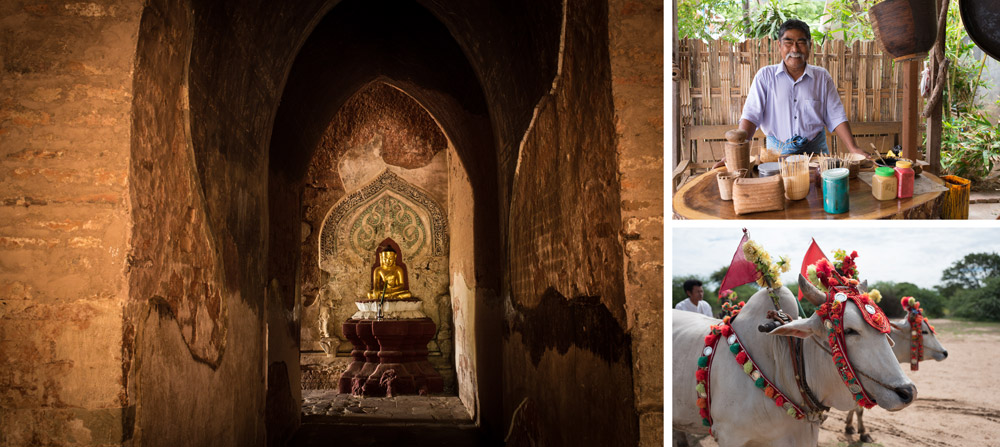
![]() OVERVIEW
OVERVIEW
Welcome to Bagan, Myanmar’s capital of culture and home to thousands of ancient pagodas and temples. Considered one of the richest archaeological sites in Asia, the area is testament to the power and pious nature of Myanmar’s past rulers. Over the course of a full day, this tour aims to show off the highlights, whilst providing a sensible balance of temples visits, arts, crafts and local life.
![]() PACE
PACE
Easy going
![]() TOUR PERIOD
TOUR PERIOD
Full day
![]() HIGHLIGHTS
HIGHLIGHTS
- Meet the skilled artisans working hard to keep a one-thousand-year-old craft alive.
- Visit Shwezigon and Ananda, two of the ancient capital’s most iconic temples.
- Marvel at some of the oldest and best-preserved frescoes in Myanmar.
- Discover some of Bagan’s lesser-known temples with the help of an ox-drawn cart.
- Watch the sun slowly set over the vast temple-strewn plain.
![]()
ITINERARY IN DETAIL
(Click to read)
Start the tour with a visit to the workshop of one of Bagan’s renowned lacquerware masters, U Maung Maung (easily identifiable thanks to his magnificent bushy moustache). Lacquerware has been produced in Bagan since the 11th century and continues to play an important role in daily life, especially religious practice. The production process has remained unchanged for centuries, giving a sense of authenticity and an assurance that the products on display are genuine.
NOTE: Unfortunately, we cannot guarantee that U Maung Maung will be available on the day, but a member of his family will be.
Although it won’t be possible to visit every temple during your time here, we’ll at least try to introduce you to some of the most iconic. Our first recommendation would be the golden Shwezigon, a pagoda that has been damaged several times by earthquakes, but miraculously still stands tall with some of its original features. An unexpected highlight of any visit here, especially for photographers, is walking the long sunlit corridor that leads up to it. Occasionally you will find a local market being held here, with plenty of traditional and locally sourced produce on display.
Before moving on, stop for some lunch at the nearby Sanon restaurant. Launched by Myanmar Youth Development Institute with the help of FRIENDS International, Sanon is part of the successful TREE (Training Restaurants for Employment and Entrepreneurship) Alliance restaurant group.
NOTE: Sanon is a recommendation only and the cost of lunch not included. If you would
prefer to eat at a different restaurant, please let the guide know – the car and driver are at your disposal.
From Sanon, travel back to Old Bagan stopping off at MBoutik social enterprise business en route. Not only is this where you will find the best selection of quality souvenirs in Bagan, but shopping here supports the economic and social development of vulnerable communities in the Magwe Region (the dry zone of central Myanmar).
NOTE: MBoutik is closed on Sundays from April to November.
Another must see architectural wonder, and one of Bagan’s grandest in terms of size and design, is the 920-year-old Ananda temple. Build using a fusion of Mon and Indian inspired techniques, the temple houses four standing Buddha images, each seemingly keeping eternal watch over the north, south, east and west entrances.
If time permits, pay a visit to Gubyaukgyi Temple in in Myinkaba Village. Approximately 900-years-old, this is where you’ll find some of the oldest and best-preserved frescoes in Bagan; they’re also accompanied by ink captions written in the old-style Mon alphabet, providing one of the earlies examples of the language’s use in Myanmar. Gubyaukgyi is also located next to Myazedi Pagoda, inside the compound of which you can find what’s referred to as the Burmese Rosetta Stone; two stone pillars with Pyu, Old Mon, Pali and Burmese inscriptions.
Finish the day with an ox-cart ride, a short and slightly bumpy journey that will take us down some of Bagan’s bumpy dirt tracks, away from the crowds and past some of the lesser known monuments. This is a great way to get a sense of what life was life in Bagan, long before the hotels and coaches. Finish at one of the recently constructed viewing mounds to watch the sun slowly set.
NOTE: Viewing mounds were first proposed by the government back in 2016 to reduce the number of people climbing the ageing, earthquake damaged monuments. The collapse of one of Shwesandaw’s lower terraces in November 2017 (the most popular temple to climb) has helped to highlight the importance of supporting this even more. We understand that the recommendation of this won’t sound as appealing, but for the sake of Bagan’s long-term preservation and your health and safety, it is important we give them a try.
![]()
INCLUSIONS
- Transportation to/from hotel in a shared vehicle
- English speaking tour guide (for other languages, please enquire)
- Bagan zone fee
- Oxcart ride
- Drinking water and hand towel
![]()
EXCLUSIONS
- Any meals
- Accommodation
- Any services not mentioned
![]() NOTES
NOTES
- You will be expected to remove your shoes when entering temples – wearing footwear that is easy to take on / off is highly recommended.
- A supplementary fee may apply on certain days – Tour Mandalay will inform you of this beforehand.
![]() PRINT
PRINT
![]() LOCATION
LOCATION

